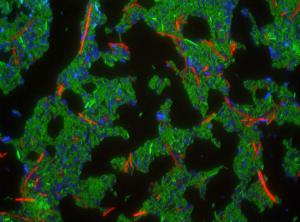Content:
Two UC Santa Barbara graduate students have demonstrated how certain microbes exploit proteins in nearby bacteria to deliver toxins and kill them. The mechanisms behind this bacterial warfare, the researchers suggest, could be harnessed to target pathogenic bacteria. Their findings appear in the Proceedings of the National Academy of Sciences.
Lead authors Julia L.E. Willett and Grant C. Gucinski have detailed how gram-negative bacteria use contact-dependent growth inhibition (CDI) systems to infiltrate and deliver protein toxins into neighboring cells. By studying the bacteria Escherichia coli (E. coli), they were able to document how CDI "translocation domains" can use multiple pathways to transfer those toxins into a cell. By understanding that mechanism, Willett said, it could be possible to use it as a model for pinpoint targeting of bacteria.
"The long-term, real-world potential is that if we know bacteria can deliver their own proteins into other cells, we might be able to use this as a delivery system for antibiotics and other therapeutics," said Willett, a doctoral student in UCSB's Department of Molecular, Cellular and Developmental Biology (MCDB). She and Gucinski conducted the work under the direction of faculty adviser and MCDB professor Chris Hayes. Hayes is the second author on the paper.


